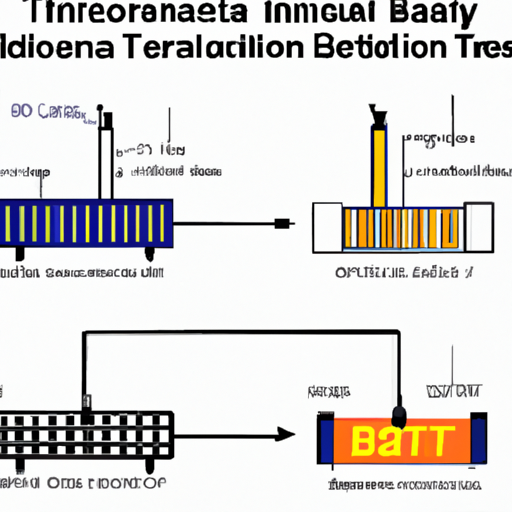The Bilateral transistor, also known as the Bipolar Junction Transistor (BJT), is a fundamental electronic device that has found applications in various industries. Its unique characteristics and versatility have made it an essential component in many electronic circuits. In this article, we will explore the industries where the BJT scenario plays a crucial role.

2. Consumer Electronics Industry: The consumer electronics industry extensively uses BJTs in a wide range of devices. BJTs are commonly found in audio amplifiers, allowing for the amplification of audio signals in devices such as televisions, radios, and home theater systems. They are also used in power supplies, voltage regulators, and motor control circuits in various consumer electronic devices.
3. Automotive Industry: The automotive industry relies on BJTs for various applications. BJTs are used in ignition systems, where they control the timing and duration of spark plugs, ensuring efficient combustion in internal combustion engines. They are also used in electronic control units (ECUs) for engine management, transmission control, and other critical functions. Additionally, BJTs are used in power window control circuits, lighting systems, and audio amplifiers in vehicles.
4. Industrial Automation and Control Systems: BJTs play a vital role in industrial automation and control systems. They are used in motor control circuits, allowing precise control of motors in manufacturing processes. BJTs are also used in programmable logic controllers (PLCs) and distributed control systems (DCS) for process control and monitoring. Additionally, BJTs are used in power electronics applications, such as inverters and rectifiers, which convert and control electrical power in industrial systems.
5. Aerospace and Defense Industry: The aerospace and defense industry extensively uses BJTs in various applications. BJTs are used in radar systems for signal amplification and frequency generation. They are also used in communication systems, electronic warfare systems, and navigation systems. Additionally, BJTs are used in guidance and control systems for missiles, aircraft, and spacecraft.
6. Medical Electronics Industry: BJTs find applications in the medical electronics industry as well. They are used in medical imaging systems, such as X-ray machines and magnetic resonance imaging (MRI) systems, for signal amplification and processing. BJTs are also used in patient monitoring systems, where they amplify and process signals from various sensors, such as electrocardiogram (ECG) and blood pressure sensors.
7. Renewable Energy Industry: The renewable energy industry relies on BJTs for power conversion and control. BJTs are used in solar inverters, which convert the direct current (DC) generated by solar panels into alternating current (AC) for grid integration. They are also used in wind turbine control systems, allowing for efficient power generation and grid synchronization.
In conclusion, the Bilateral transistor BJT scenario finds applications in various industries, including telecommunications, consumer electronics, automotive, industrial automation, aerospace and defense, medical electronics, and renewable energy. Its versatility, reliability, and ability to amplify and switch signals make it an indispensable component in modern electronic systems.
The Bilateral transistor, also known as the Bipolar Junction Transistor (BJT), is a fundamental electronic device that has found applications in various industries. Its unique characteristics and versatility have made it an essential component in many electronic circuits. In this article, we will explore the industries where the BJT scenario plays a crucial role.

2. Consumer Electronics Industry: The consumer electronics industry extensively uses BJTs in a wide range of devices. BJTs are commonly found in audio amplifiers, allowing for the amplification of audio signals in devices such as televisions, radios, and home theater systems. They are also used in power supplies, voltage regulators, and motor control circuits in various consumer electronic devices.
3. Automotive Industry: The automotive industry relies on BJTs for various applications. BJTs are used in ignition systems, where they control the timing and duration of spark plugs, ensuring efficient combustion in internal combustion engines. They are also used in electronic control units (ECUs) for engine management, transmission control, and other critical functions. Additionally, BJTs are used in power window control circuits, lighting systems, and audio amplifiers in vehicles.
4. Industrial Automation and Control Systems: BJTs play a vital role in industrial automation and control systems. They are used in motor control circuits, allowing precise control of motors in manufacturing processes. BJTs are also used in programmable logic controllers (PLCs) and distributed control systems (DCS) for process control and monitoring. Additionally, BJTs are used in power electronics applications, such as inverters and rectifiers, which convert and control electrical power in industrial systems.
5. Aerospace and Defense Industry: The aerospace and defense industry extensively uses BJTs in various applications. BJTs are used in radar systems for signal amplification and frequency generation. They are also used in communication systems, electronic warfare systems, and navigation systems. Additionally, BJTs are used in guidance and control systems for missiles, aircraft, and spacecraft.
6. Medical Electronics Industry: BJTs find applications in the medical electronics industry as well. They are used in medical imaging systems, such as X-ray machines and magnetic resonance imaging (MRI) systems, for signal amplification and processing. BJTs are also used in patient monitoring systems, where they amplify and process signals from various sensors, such as electrocardiogram (ECG) and blood pressure sensors.
7. Renewable Energy Industry: The renewable energy industry relies on BJTs for power conversion and control. BJTs are used in solar inverters, which convert the direct current (DC) generated by solar panels into alternating current (AC) for grid integration. They are also used in wind turbine control systems, allowing for efficient power generation and grid synchronization.
In conclusion, the Bilateral transistor BJT scenario finds applications in various industries, including telecommunications, consumer electronics, automotive, industrial automation, aerospace and defense, medical electronics, and renewable energy. Its versatility, reliability, and ability to amplify and switch signals make it an indispensable component in modern electronic systems.